12 Classic Zukuri Types in Japanese Swords
NO AI USED This Article has been written and edited by our team with no help of the AI
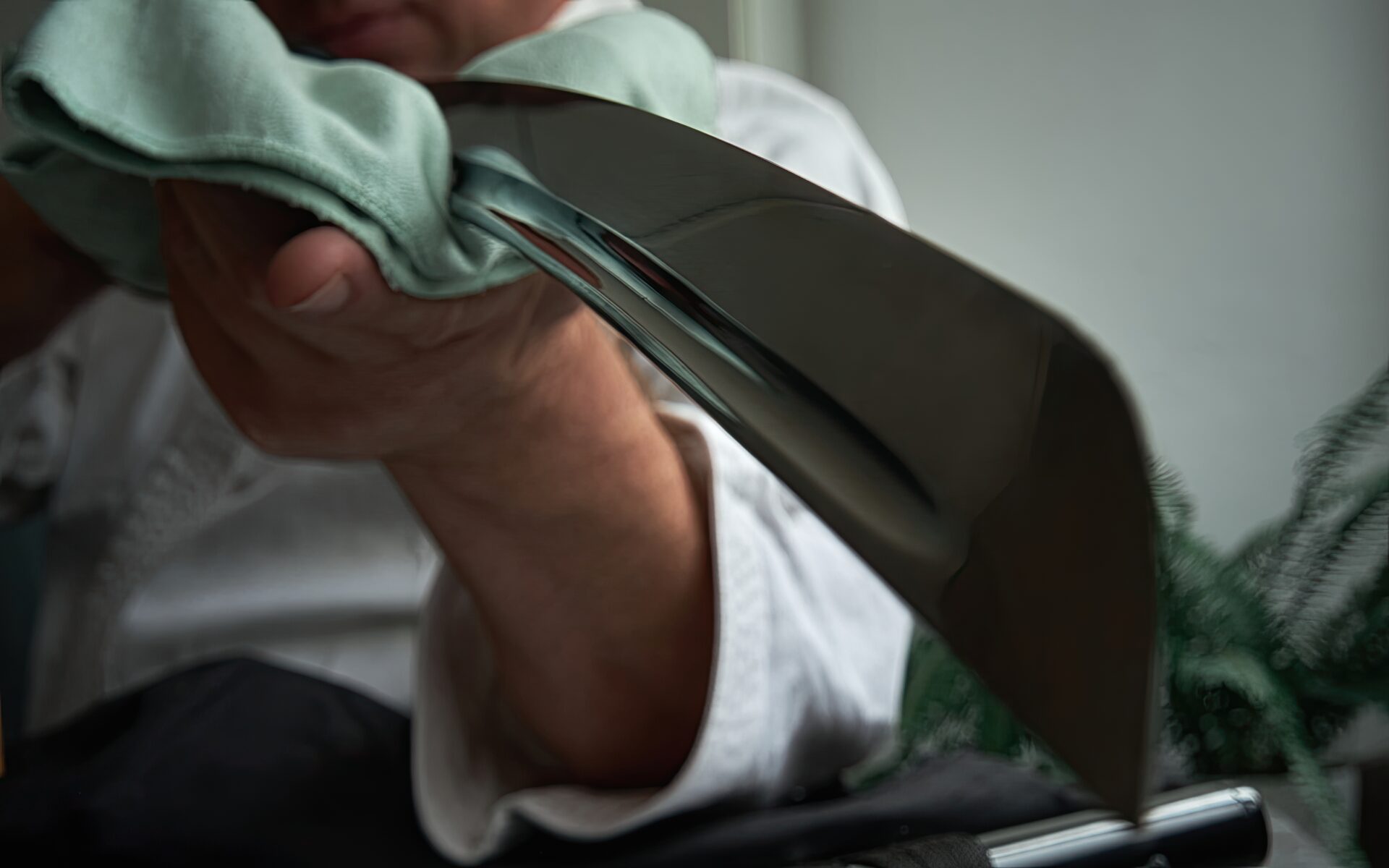
In the context of Japanese swords, the term “zukuri” refers to the blade profile—meaning the blade shape and style. The design can differ in terms of the cross-section, ridge-line, width, thickness, curvature, and general form of the blade.
Zukuri can be broadly classified into blade shapes for longer swords or short swords. However, many of these profiles can overlap.
This article delves into the different zukuri, starting with those in longer swords, then shorter swords—beginning with popular ones before exploring those that are more obscure.
Longer Sword Profiles
Longer swords such as the katana, tachi, naginata, nagamaki, and wakizashi feature different zukuri, giving them different cutting, thrusting, and handling attributes.
1. Shinogi-Zukuri
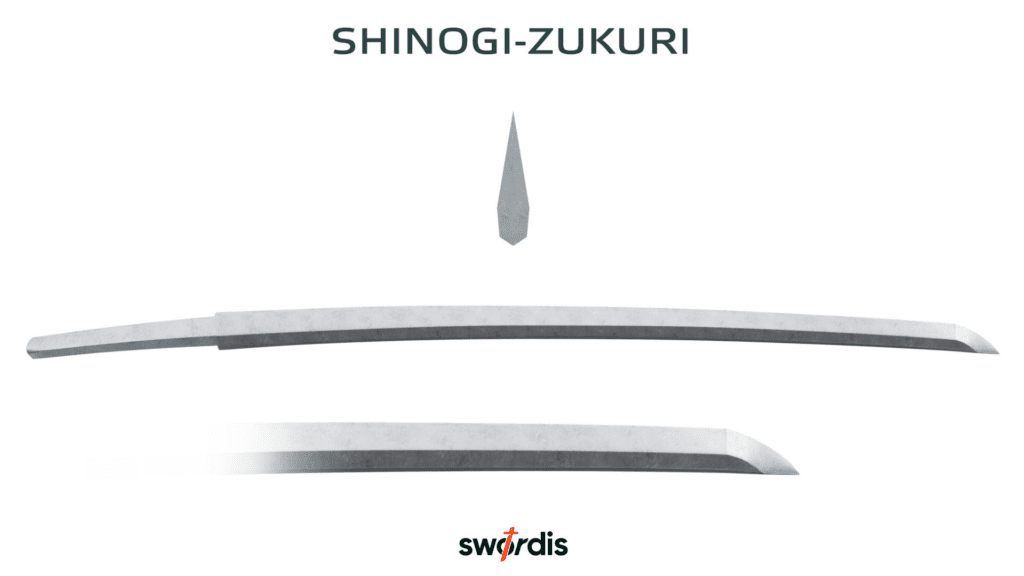
Shinogi-zukuri is the most common blade profile for long swords such as katana, tachi, and wakizashi. Also known as hon-zukuri, these blades were produced after the Heian Period, around 987 CE. This design allows for a powerful cut and deep thrust. It is often seen in blades used on the battlefield and for self-defense.
2. Hira-Zukuri
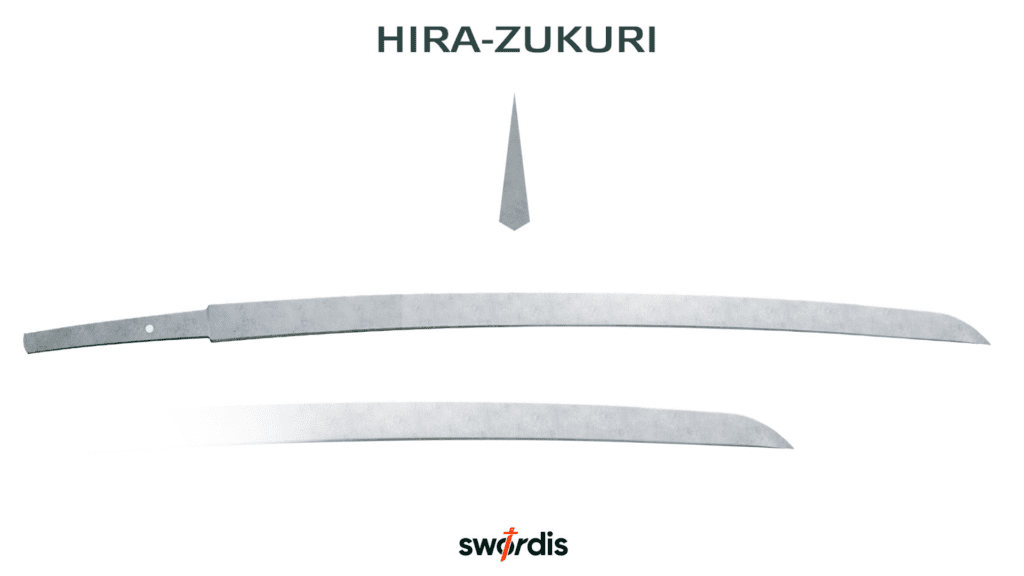
Without a ridge-line (midline), hira-zukuri blades are nearly flat. This means it has a longer taper to the edge, making it ideal for cutting. While some think the thin blade is a weakness, this view has been debunked. a very long distal taper running to its razor edge.
Walter Sorrels, a bladesmith who specializes in Japanese swords, says, “Clearly the myth that hira-zukuri blades are not suitable for vigorous test cutting is a lie by the test that we did here today.”
This type of blade first appeared in tachi produced in ancient times. While often seen in katana, it is also common in tanto and ko-wakizashi after the Heian Period (after 806 CE).
3. Shobu-Zukuri
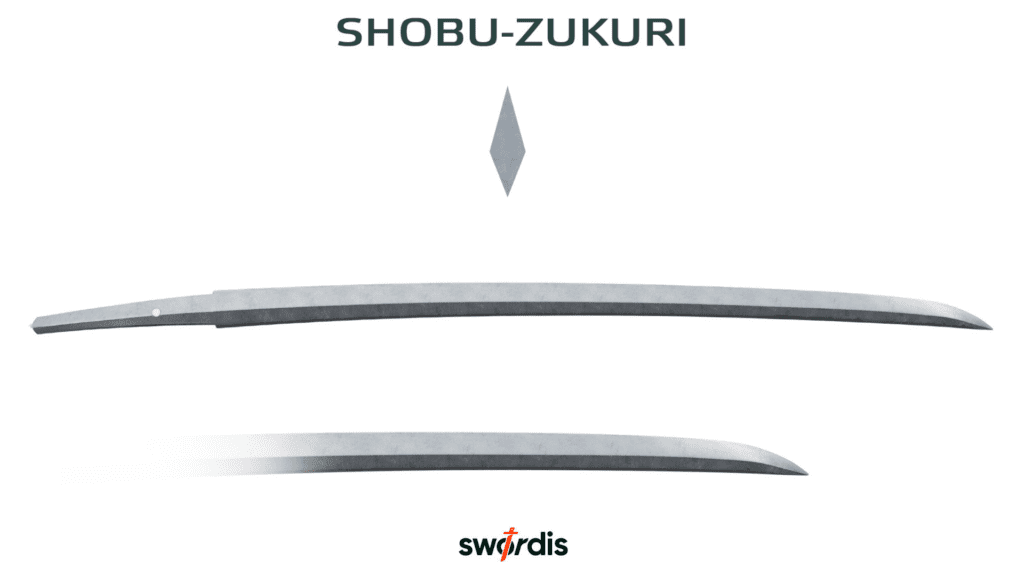
Shobu-zukuri blades are similar to shinogi-zukuri blades, but without the presence of a defined tip.
First designed for the tachi, these blades were popular during the battle-filled Muromachi Period (1336-1537) as they were easier to produce without having to spend time on the tip. This design also allows for powerful slashes that cut the target with a lower chance of being lodged in the target due to the shape of its tip.
4. Unokubi-Zukuri
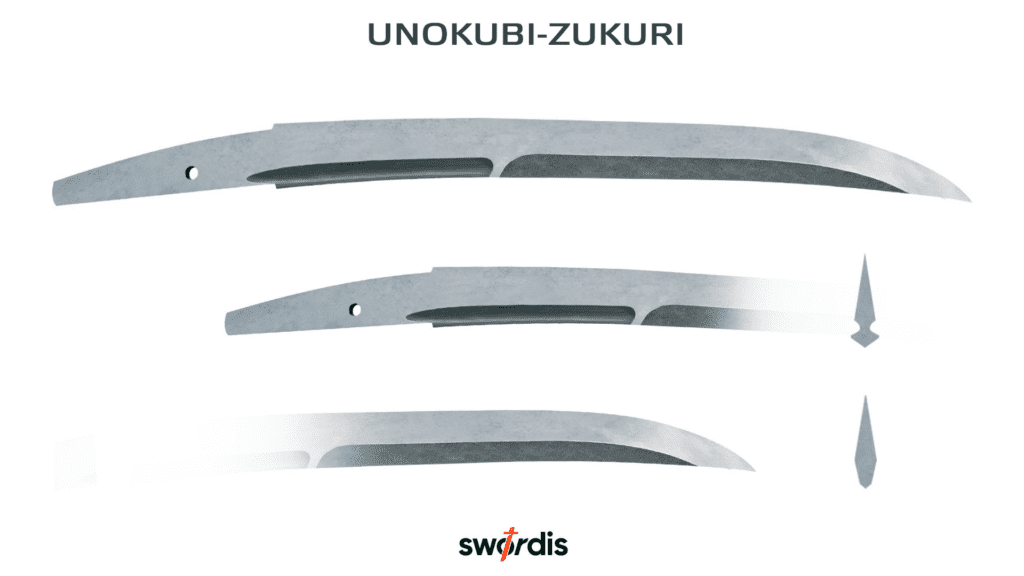
Unokubi-zukuri literally translates to “cormorant’s neck”. Initially used on polearm swords such as the naginata, it was later adopted for the katana. It is also common in wakizashi and tanto from the Kamakura Period (1185 – 1333 CE) to the Nanbokucho Period (1336 – 1392 CE)
As implied by its name, these blades have thinner segments between the thicker base and tip, similar to a neck to reduce the blade’s weight while maintaining its strength. This type sometimes has a yokote.
5. Nagamaki-Zukuri
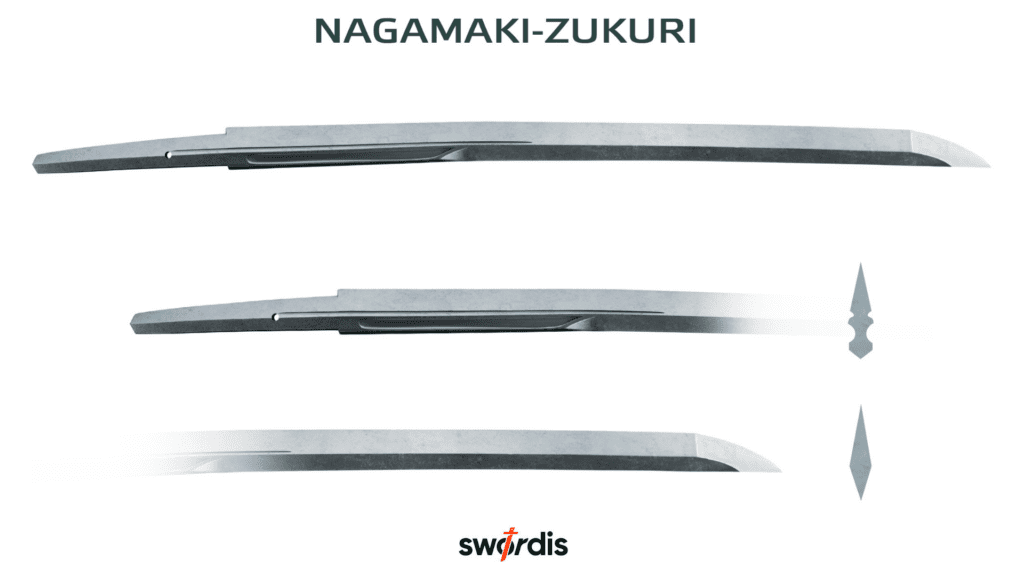
Nagamaki-zukuri is a blade profile that was used in the nagamaki, a long two-handed Japanese sword with an extra long handle.
As battle requirements changed throughout Japanese history, long weapons like the nagamaki were no longer popular. This resulted in old nagamaki blades being reshaped into new swords, a common occurrence during the Muromachi period.
6. Morokiriha-Zukuri (Kiriha-Zukuri) – Straight Katana
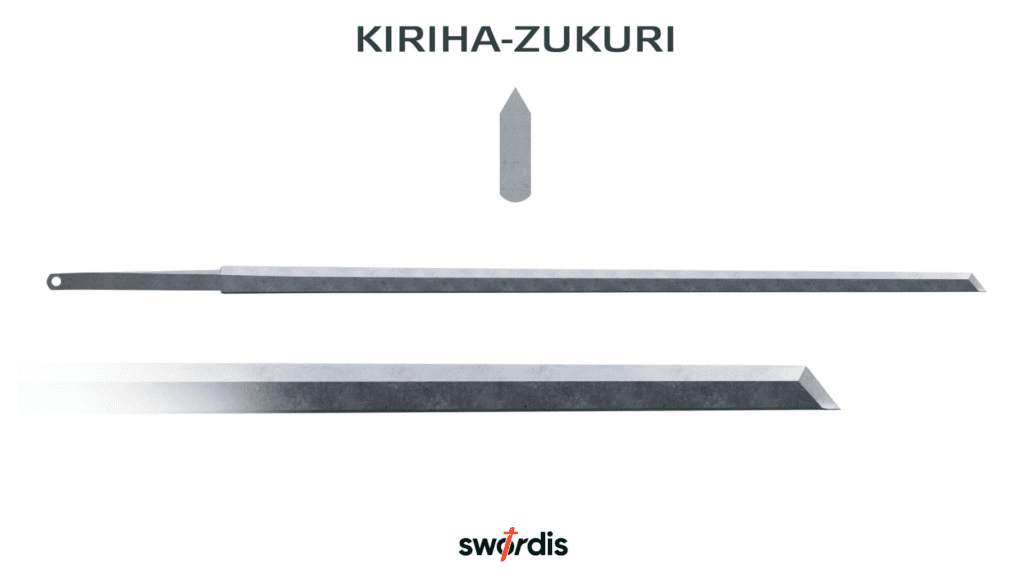
Kiriha-zukuri blades have a ridge line that runs quite close to the edge, giving it a wide shinogi-ji. It is believed to have evolved from hira-zukuri.
Apart from later imitations, this shape is seen only in the ancient Japanese swords with straight blades such as chokuto or jokoto. Due to its rigid structure, this design is effective for thrusting.
7. Katakiriha-Zukuri
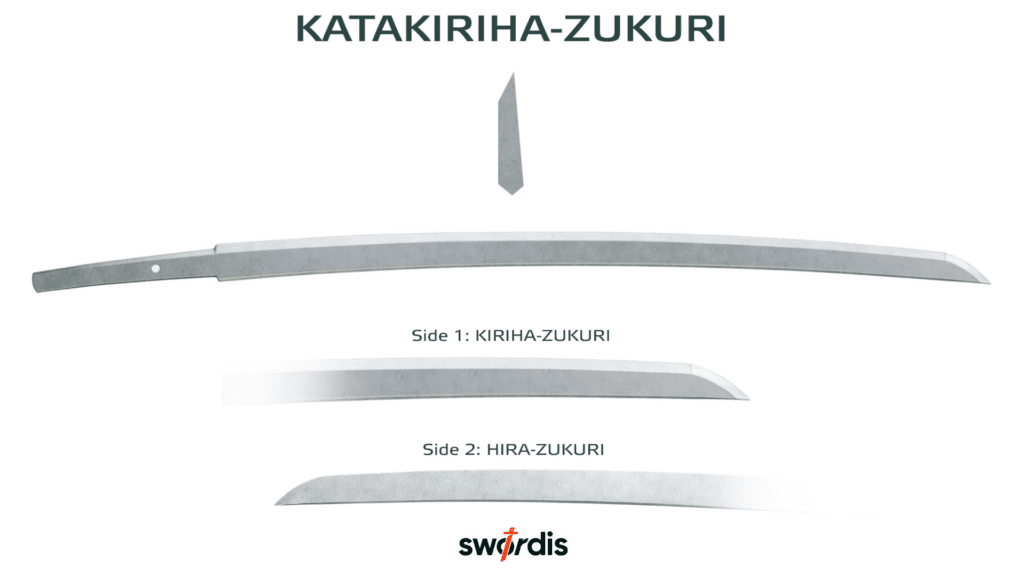
Katakiriha-zukuri blades are more unusual and therefore, the rarest shape throughout history, and even today. It combines two profiles—one on each side of the blade. Typically, kiriha-zukuri is on one side while the other can be hira-zukuri, shinogi-zukuri, or shobu-zukuri.
It originated from experimentation around the end of the Kamakura Period (1288 – 1334 CE) to cope with the different types of armor, especially with the arrival of the Mongols. It was fashionable at the beginning (1596 – 1643 CE) and end (1781 – 1867 CE) of the Edo Period.
8. Kissaki-Moroha-Zukuri (Kogarasu-Zukuri) – Double-Edged Katana
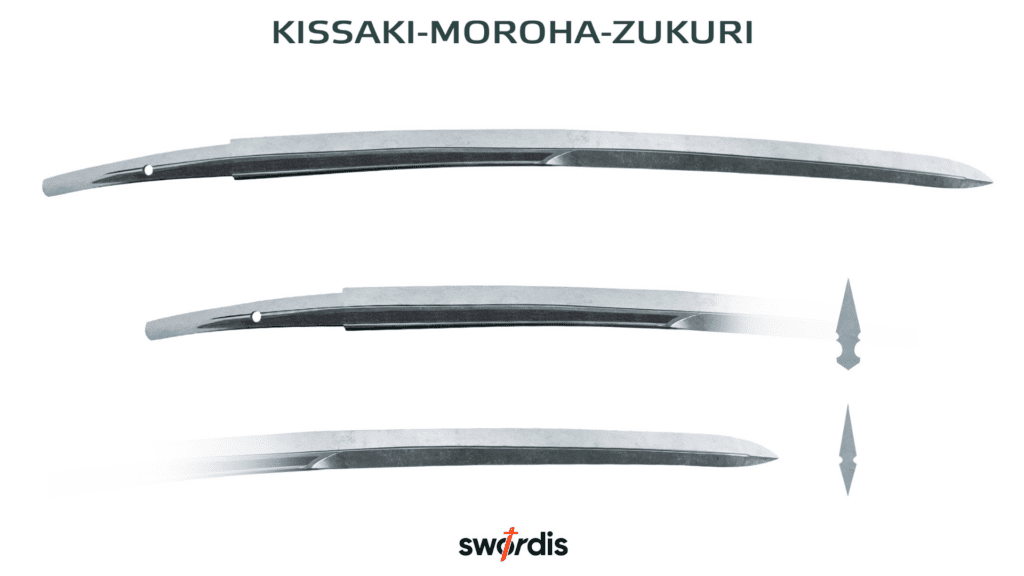
The kissaki-moroha-zukuri has a tip sharpened on both edges while the lower portion of the blade is shaped differently from the tip. It originated at the end of the Nara Period (708 – 781 CE) when local smiths experimented to move away from Chinese swords. This shape was later imitated by later swordsmiths.
The “Kogarasu-Maru”, a famed sword of the Heike—the largest warrior family of the Heian Period—is of this type, with a shallow curvature and the upper half of the blade sharpened on both sides. It is due to this sword that this blade profile is also known as kogarasu-maru-zukuri.
Shorter Sword Profiles
Blade profiles on shorter swords were designed for a more rigid structure or to reduce the weight of the blade for easier handling. While some were used in longer blades as well, they were more frequent in shorter swords such as the tanto and wakizashi.
1. Kanmuriotoshi-Zukuri
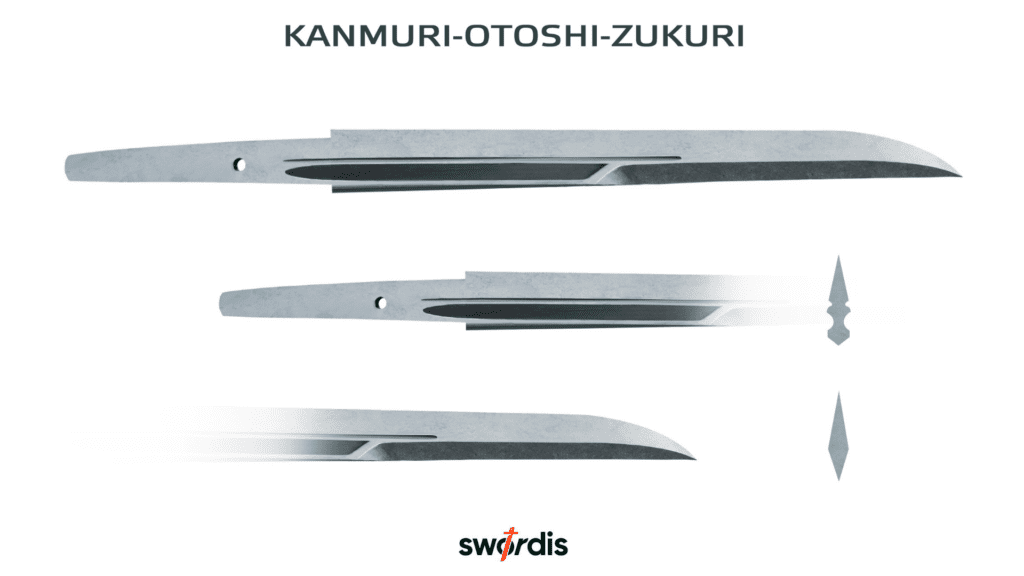
Kanmuri-otoshi-zukuri is a more complex blade profile. The lower part of the blade is shinogi-zukuri style, but the shinogi-ji (flat surface between the ridge line and spine of the blade) is cut diagonally, similar to the shobu-zukuri style.
Kanmuri-otoshi-zukuri is more often seen in swords made in the Yamato province and related schools starting in the Kamakura period (after 1182 CE). Besides giving the sword a unique appearance, it also enhances its cutting ability, reduces the overall weight of the sword, and improves handling.
2. Osoraku-Zukuri
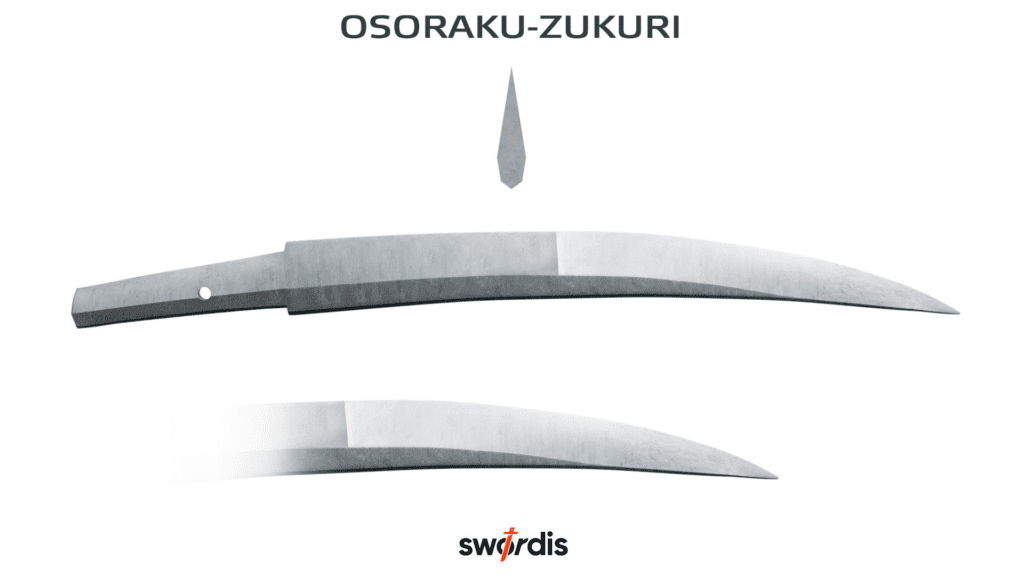
Osoraku-zukuri is unique in appearance and functionality. This style has a very large tip, longer than the lower portion of the blade. This results in a deeply curved construction which enhances its cutting ability.
It is usually seen only in tanto and wakizashi. This style originated from Shimada Sukemune, and it is named after he carved the word “osoraku” on one of his blades said to belong to Katagiri Katsumoto, a famous general during the Sengoku Period.
3. Moroha-Zukuri
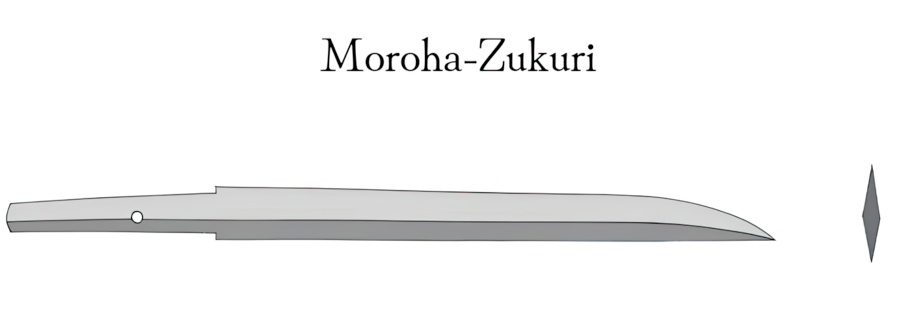
Moroha-zukuri are double edged blades that can be straight or curved. Unlike the ken, each side is different. It is usually seen in tanto produced after the mid-Muromachi period (around 1467 CE).
Although there were some long swords made in this style, they soon fell out of favor.
4. Hocho-Zukuri
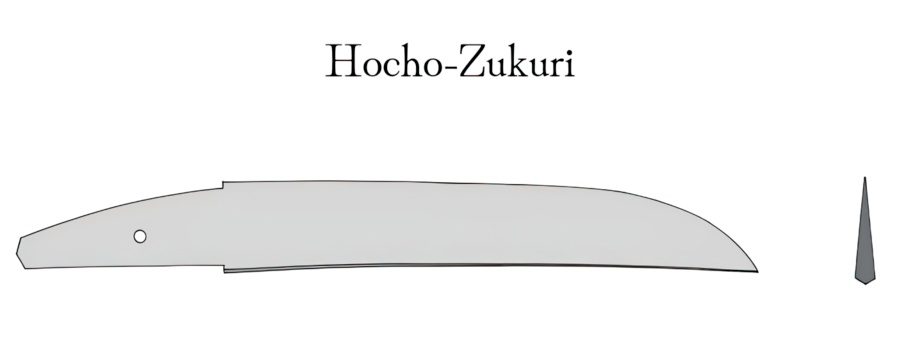
Hocho-zukuri blades are thin and flat on both sides. Often compared to a kitchen knife, the blade is broad when viewed from the side to cut the target deeply while remaining lightweight.

